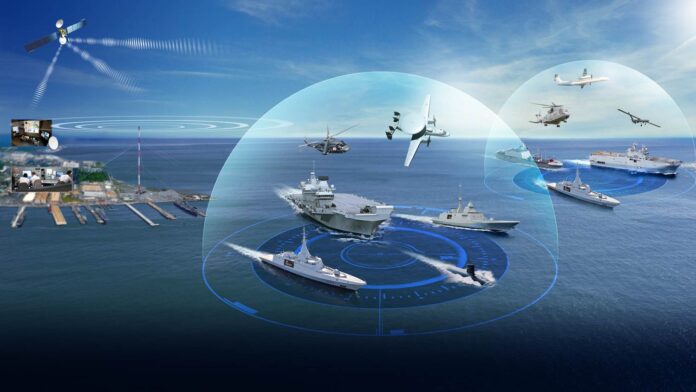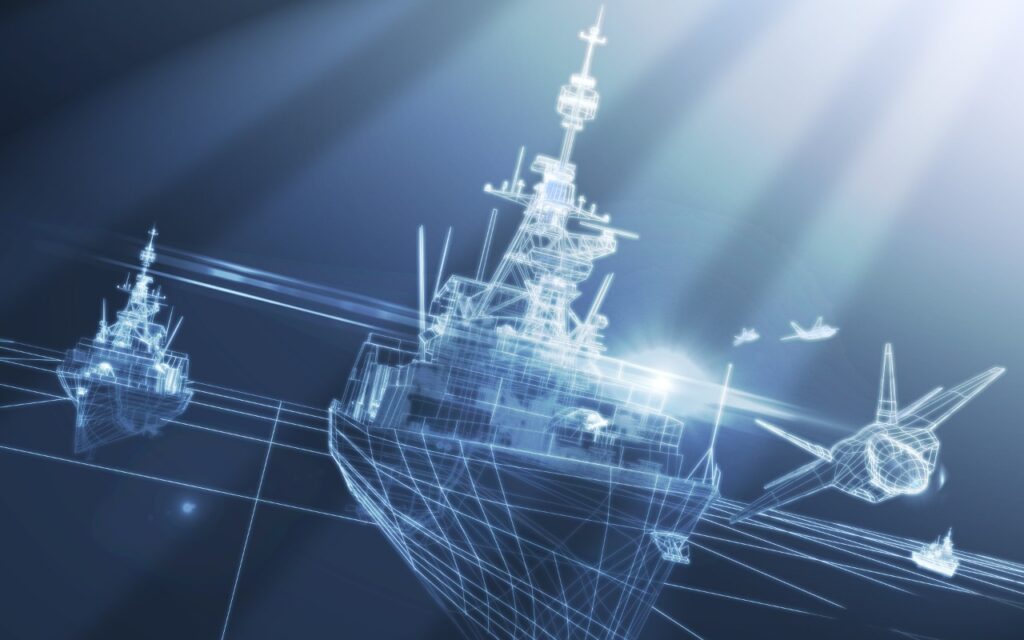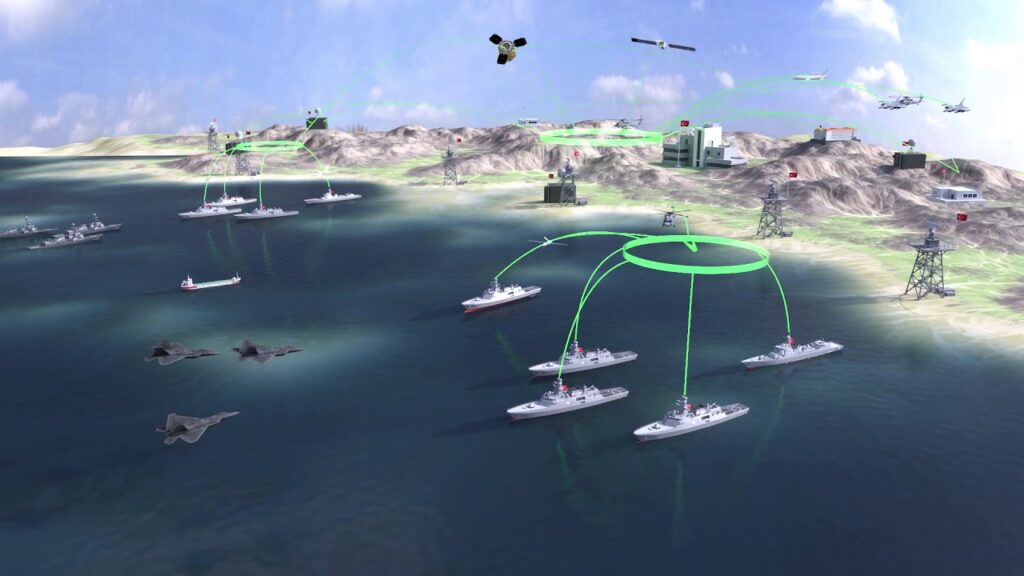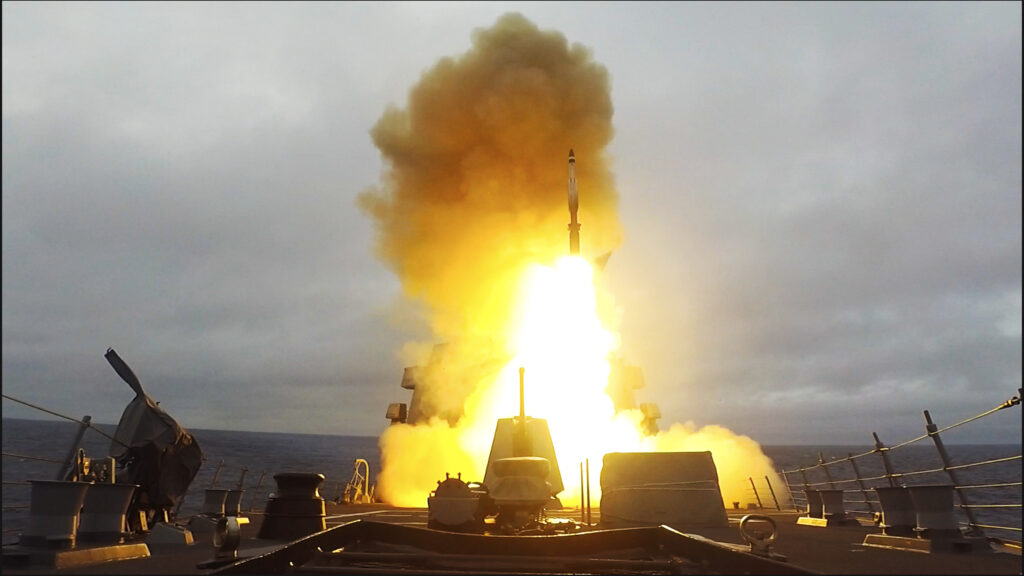
Network-centric warfare, also called network-centric operations or net-centric warfare, is a military doctrine or war theory that seeks to translate an information advantage, enabled in part by information technology, into a competitive advantage through the robust computer networking of well geographically informed dispersed forces. It was pioneered by the United States Department of Defense in the 1990s.
The term “network-centric warfare” (NCW) broadly describes the combination of emerging tactics, techniques, and procedures that a fully or even partially networked force can employ to create a decisive warfighting advantage. NCW generates increased combat power by networking sensors, decision-makers, and shooters to achieve shared awareness, increased speed of command, high tempo of operations, greater lethality, raised survivability, and a degree of self-synchronization. It translates information superiority into combat power by effectively linking friendly forces within the battlespace, providing a much-improved shared awareness of the situation, and enabling more rapid, effective decision-making.

Network Centric Operations (also known as NCW) are a vital component of DOD planning for the transformation of the military. Network Centric Operations (NCOs) rely on computer equipment and networked communications technology to provide a shared awareness of the battlespace for U.S. forces. The shared awareness increases synergy for command and control, resulting in superior decision-making and coordinating complex military operations over long distances for an overwhelming warfighting advantage. NCO technology saw limited deployment in Afghanistan and, more recently, increased deployment in Operation Iraqi Freedom (OIF). Several DOD essential programs are now underway for deployment throughout all services.
Definition of Network Centric Operations
NCO is a theory that proposes that the application of information age concepts to speed communications and increase situational awareness through networking improves both the efficiency and effectiveness of military operations. Proponents advocate that this allows combat units to be smaller in size, operate more independently and effectively, and undertake a different range of missions than non-networked forces. NCOs are military operations that exploit state-of-the-art information and networking technology to integrate widely dispersed human decision-makers, situational and targeting sensors, and forces and weapons into a highly adaptive, comprehensive system to achieve unprecedented mission effectiveness.
Networked sensors are sources of data, and data is processed into information. NCO is intended to increase collaboration by enabling the free flow of information across the battlespace so that acquired data is shared, processed into information, and then provided quickly to the person or system that needs it. The ability to decide and act faster than the opponent allows us to define or alter the initial conditions on terms favourable to our interests. Networking is the critical enabler of the battlespace transparency necessary for speed.

Concurrent technological revolutions
Information technology is one apparent force multiplier, but what we face are three concurrent technological revolutions. The first is in sensor technology. The sensor revolution is twofold: one movement toward sensors able to achieve near-real-time surveillance over vast areas, and another toward smaller, cheaper, more numerous sensors that can be netted to detect, locate, identify, and track targets. Together, these trends can produce systems that will provide the quantity and quality of data needed to create a “situational awareness” that is “global in scope and precise in detail.”
The second revolution is in information technology. The information revolution will bring the geometric increase in computing power necessary to process, collate, and analyze this vast quantity of sensor data. It will provide means to distribute information to any recipient or “shooter” anywhere in the world at near-real-time speeds.
The third is in weapons technology. The weapons revolution is a matter of increasing numbers of precise munitions by reducing costs. It, like the sensor revolution, is twofold. Better streams of targeting data can permit a “dumbing down” of expensive guidance packages. At the same time, new designs, electronics, “lean” manufacturing, and mass production can decrease the cost for a given level of accuracy and capability.
In the coming decade, these revolutions will interact and multiply each other’s impacts and create a kaleidoscope of potential synergies that will change the character of war as we know it. These revolutions and this change in how we think about war have come to be embodied in the idea of network-centric operations.

Navy Cooperative Engagement Capability (CEC)
The CEC system links Navy ships and aircraft operating in a particular area into a single, integrated air-defence network. The radar data collected by each platform is transmitted in real-time to the other units in the network. Each unit in the CEC network fuses its radar data with data received from the other units. As a result, units in the network share a common, composite, real-time air-defence picture. CEC will permit a ship to shoot air-defence missiles at incoming anti-ship missiles that the ship itself cannot see, using radar targeting data gathered by other units in the network. It will also permit air-defence missiles fired by one ship to be guided by other ships or aircraft.
Conclusion
Forward deployment of naval forces that may be widely dispersed geographically, the use of fire and forces massed rapidly from a great distance at decisive locations and times, and the dispersed, highly mobile operations of Marine Corps units are examples of future tasks that will place significant demands on networked forces and information superiority. Future naval forces must be supported by a shared, consolidated picture of the situation, distributed collaborative planning, and battlespace control capabilities. In addition, the troops must be capable of coordinating and massing for land attacks and employing multisensor networking and targeting for undersea warfare and missile defence.
Check out Naval Library App to find out the specifications of Link systems.




